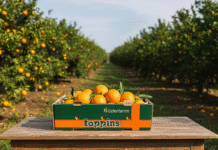There is a limit to how much incremental benefit is derived from tweaking the basic design, but radically changing the material construction and production method potentially creates a premier league of environmentally lower impact systems. Maybe Tokyo Pack 2018 will bring technologies that will be the real game changers.
Retort pouches recorded all-time top sales this year in Japan and the sector had its strongest-ever showing at Tokyo Pack 2016—an important shop window for companies serving the Asia region—where Swedish pouch manufacturer Ecolean competed with domestic suppliers for new business in arguably the most testing global market, and Japanese-owned Kururay Plantic revealed its future intentions to expand into pouches.
Japan is seen as Ecolean’s next growth market and the company has continued its penetration of Southeast Asia by opening a Japanese office a year ago in a fashionable quarter of Tokyo. The European alternative microwavable pouch has significant advantages from the perspective of Japan’s retail industry, which looks for benefits that packaging can offer the environment and users. Forty percent of the material is made from chalk so it naturally stands out from the rest of the crowd based on conventional film structures; and key design elements are tailored to on-shelf impact, kitchen convenience and longer product life.
It is typical in Japanese retailing to flag up novel aspects of pack design, to entice shoppers into trying something new and different. Ecolean provides air-filled handle for comfort while pouring, a re-closing feature to help prolong product freshness and the option of transparency, all of which appeal to the domestic consumer market.
The show provided an ideal platform for unveiling the latest, smaller volume Ecolean Air Aseptic 125 ml pouch to an audience of visitors from Japan and across Asia. This followed the recent commercial launch with a Pakistani producer of a dairy-based ‘convenience’ product for the hot tea category. Pakistan is one of Ecolean’s biggest aseptic markets and half a billion packs have been supplied to two customers there this year, according to company spokesperson Hanna Jeppsson.
Further, she revealed that the US market office had signed its first North American customer contract in September, which is already doing business in South America, in Colombia and Argentina. Elsewhere, Chinese dairies Mengu and Bright Foods are big customers for pouches in sizes 200 ml and less; and Russia has more than 30 machines producing family size packs of UHT milk and other dairy-based liquid foods.
Pouches are the future for Kururay-owned Plantic, the company revealed at Tokyo Pack. The producer of biodegradable material, 85 percent made from renewables, is currently working on a thinner food-tray lidding film of 50 micron or less and expects results in “one or two years”. Packaging South Asia asked Plantic researcher Yuki Morino for their plans ahead. “The future is in pouches,” she confided.
As long as Japan’s love affair with pouches continues, developers will need to stretch themselves and pack technology to differentiate one product from the next. There is a limit to how much incremental benefit is derived from tweaking the basic design, but radically changing the material construction and production method potentially creates a premier league of environmentally lower impact systems. Maybe Tokyo Pack 2018 will bring technologies that will be the real game changers.
Pick of the best in Japanese design

Packaging for the Japanese market has to be as good as it gets, offering very high quality aesthetics and functionality, environmental benefits and user comfort and convenience. In addition, the final product must command attention to achieve brand impact and shelf stand-out. Here is a hand-picked selection of outstanding and typical examples that reflect the domestic retail landscape and moves in Japanese packaging and printing technology.
Crown Packaging produces paper and board by blending recycled paper pulp with safflower petals discarded by red food dye manufacturers, green-tea processing waste, cocoa bean husks, palm husks and bamboo. A material called Berry-Mix is being trialled that uses blueberry skins from the production of blueberry juices. Subtle tints of purple, green and pink and neutral shades, and the flecking, give away the recycled origins of the Smartpapier range. The company is campaigning for the Tokyo 2020 Olympics and Paralympics to promote Forest Stewardship Council (FSC) standards, and recycles the ten million origami paper cranes, or Irizuru, sent annually to the Hiroshima Peace Memorial Park.
A near-invisible barcode known as digital watermarking was shown by DNP, license holder for the Asia region for a “unique” technology by Digimarc
A cat-food brand by Hagoromo Foods has become the first commercial user of a combination inkjet and water-based white color gravure printing system suitable for retort pouches, developed by Fuji Tokushu Shigyo. Winner of a Japan Good Packaging Design Award, it marks a “first in a digitally printed package”, says Hiroshi Umemoto, head of the sales division for Fuji. M.O.
The “Be Active” theme of Toyo Seikan’s stand suggests sports mania has arrived early for the host nation of the 2019 Rugby World and 2020 Olympics and Paralympics.
A new design of ring-pull bottle cap by Toyo Seikan group member Nippon Closures has a depression that allows the finger to access the ring and pull, making it easier to open. It is expected on-shelf in 2017, available in standard red, green and gold and custom colors, sizes 26 mm and 32 mm. The Ben Lid for the drinks-to-go market is in development, designed to reopen and lockable for improved safety.

Fanuc introduced a robotic workmate for packaging-line operatives. The CR-7iA/L can be allowed to wander freely around the factory-floor thanks to its intelligent safety functions. Surprisingly soft to touch and responsive to touch, depending on the level of force, it will pause then continue, or come to a full stop and require a manual restart. Future users are considering how to apply the robot and it will be developed accordingly, says Fanuc’s manager for sales in India, Hiroshi Ota. Last year, Japan Pack introduced its big brother, the CR-35iA, which has been in the car-making industry since mid-2015 and still waiting for the big break into packaging.
A near-invisible barcode known as digital watermarking was shown by DNP, license holder for the Asia region for a “unique” technology by Digimarc. Datalogic Magellan 9800i scanning machinery developed for the Japanese market will be launched in summer 2017 giving retailers the chance to offer a speedier checkout service. Shoppers can scan the code with a smartphone for allergy information and to obtain vouchers.
Paper is still king and the number one packaging material in Japan. Hexa Japan offers a light, durable and eco-friendly paper honeycomb for use in the production of suitable alternatives to wood and plastic in pallets, claimed to be strong enough for making furniture and building exhibition stands.
Tokyo Pack was worth a punt for sole British exhibitor Advanta, a metal tray manufacturer standing number one and two in the UK in all its market sectors, and there to explore the potential of Japan. Expansion plans, if they go ahead, probably involve a Japanese partner, concludes managing director Steve Pinhorne, pictured with export sales manager Miguel Campos and business development manager Ashley Chen.
Refillable concepts are key to Japan’s circular economy ambitions and designs are under continual review, refreshment and development. A “clean, easy and stress-free” pouch-exchange type refill system that skips the capping process after filling is designed to keep the contents fresh until the last drop is pumped out. A pouch-refill system by Kao has made it easier to dispense a high viscosity shampoo by adding top and bottom gussets to help give a steady flow, awarded for Technical achievement. An easily detachable refill container by U Co aims to avoid oxygen ingress to keep contents fresh.
User-friendly designs by DNP include a concept for one-handed opening that uses two materials easily separated for disposal and a tearable film for making a pouch simpler to pull open DNPeasyopentear

Taisei Lamick specializes in laminated film materials and machinery and presented a house-designed “safe-squeeze” pouch called the Dangan Orios, produced on a Dangan 2. When folded and squeezed, a tiny tube-like feature gives a clean and controllable flow. Scheduled to enter the fast foods market in 2017, it is thought to have potential in the cosmetics market. A twin-pack version is able to dispense mustard and ketchup at the same time.
Pictured at a Korean table-top barbecue, veteran packaging expert and mentor to two generations of industry professionals Toshio Arita (left) with Helén Williams, senior lecturer at Karlstad University whose talk on how to change perceptions of packaging from environmental villain to hero was as part of a day of seminars focused on sustainable technologies from Sweden.
Just add water to turn a flat plastic sheet into a watering-can or flower vase. This example of a typically Japanese ingenuity is by design company D-bros and spotted in a store at Shinagawa Station.











